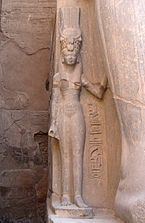Other names Tawananna Died 1200 BC | Spouse Ḫattušili III | |
 | ||
Children Tudḫaliya IV, Maathorneferure, Kilushepa, Tasmi-Sarruma Parents Pentibszarri, Bentepsharri Similar Ḫattušili III, Tudḫaliya IV, Muršili II, Muwatalli II, Maathorneferure | ||
8 tufanbeyli magara pudu hepa ramses cezmi yurtsever 8
Puduḫepa (fl. 13th century BCE) was a Hittite queen married to the King Hattusili III. She has been referred to as "one of the most influential women known from the Ancient Near East."
Contents
- 8 tufanbeyli magara pudu hepa ramses cezmi yurtsever 8
- Early life and marriage
- Reign
- Nefertari and Puduepa
- References
Early life and marriage
Puduḫepa was born at the beginning of the 13th century BCE in the city of Lawazantiya in Kizzuwatna (i.e. Cilicia, a region south of the Hittite kingdom). Her father Bentepsharri was the head priest of the tutelary divinity of the city, Ishtar, and Puduḫepa grew up to exercise the function of priestess of this same goddess.
On his return from the Battle of Kadesh, the Hittite general Hattusili met Puduḫepa and, it was said, Ishtar instructed him to take her as his wife. She went with him then to the kingdom of Hapissa. When her spouse successfully rose to the Hittite throne by defeating his nephew Mursili III, Puduḫepa became a queen.
Reign
Puduḫepa had an important role to play in the Hittite court and international diplomacy of the period. She would appear constantly by the side of her husband as he made his rulings and decisions. It appears however that she was portrayed reigning hand in hand with her husband rather than subservient to the king.
She played an important role in diplomacy with Ancient Egypt. Puduḫepa communicated several times with the king of Egypt Ramesses II as he signed a peace treaty with Hattusili, in which Hattusili agrees that two of his daughters should go to Egypt to marry Ramesses.
A diplomatic marriage between King Kadashman-Enlil II of Babylonia may have been in the offing with Puduḫepa matchmaking Kadashman-Enlil’s betrothal to one of her daughters.
A princess of Babylon was married into the Hittite royal family. This would have been a daughter or sister of King Kudur-Enlil and the news elicited contempt from Ramesses II, who apparently no longer regarded Babylon as politically significant. Puduḫepa replied in a letter, ‘If you say "The king of Babylon is not a Great King," then you do not know the status of Babylon.’
After the death of Hattusili, the role of Puduḫepa expanded under the reign of her son Tudhaliya IV, under the title of goddess-queen. She was involved in judicial matters to the point of intervening in legal cases. She was also a priestess who worked on organising and rationalising Hittite religion.
Her daughters were Queen Maathorneferure of Egypt and Princess Kiluš-Ḫepa.
Nefertari and Puduḫepa
Queen Nefertari of Egypt sent gifts to Puduḫepa :
The great Queen Naptera (Nefertari) of the land of Egypt speaks thus: ʻSpeak to my sister Puduḫepa, the Great Queen of the Hatti land. I, your sister, (also) be well!! May your country be well. Now, I have learned that you, my sister, have written to me asking after my health. You have written to me because of the good friendship and brotherly relationship between your brother, the king of Egypt, The Great and the Storm God will bring about peace, and he will make the brotherly relationship between the Egptian king, the Great King, and his brother, the Hatti King, the Great King, last for ever... See, I have sent you a gift, in order to greet you, my sister... for your neck (a necklace) of pure gold, composed of 12 bands and weighing 88 shekels, coloured linen maklalu-material, for one royal dress for the king... A total of 12 linen garments.’
